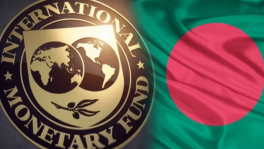Tipu Sultan and tiger
Tiger has become a symbol of our national spirit nowadays

In Bangladesh, whenever we heard the word 'tiger,' the image of Bangladeshi cricket team comes to our minds. The feelings of nationalism grip us. We express our joy and confidence through making the roar of tigers when our players beat the opponent team.
Thus, tiger has become a symbol of our national spirit nowadays. However, this is not a new thing in Asian countries.
Since ancient times, tiger has been the symbol of power in many countries of this region, and it is associated with the mightiness of kings. The kings loved to compare their strength, courage, and fearsome nature with those of tigers.
But there was one ruler like whom on one could make tiger as his own symbol in the world. Can you guess who he was? Yes, it was Tipu Sultan, the ruler of the then Kingdom of Mysore, which is now the Indian state of Karnataka.
Tipu was Tippoo in the eighteenth-century. It means tiger in the Canarese language. It is evident from Tipu's life that he identified himself with tigers. 'The Tiger of Mysore' was his personal epithet.
All uniform of Tipu's infantry and palace guards were decorated with Bubry (stylized Tiger stripes). Two live tigers were chained on the private square in front of his palace. He used the symbol of tiger on his sword hilts, cannon muzzles and his other personal objects.
His throne, an extraordinary masterpiece of art, was in the form of a life-sized tiger.
Decorated with gold and precious stones, it was later broken into pieces by the British rulers. After that a massive tiger head, two small tiger heads and the gorgeous bird of paradise (Huma) perching over the ornamental canopy of the royal seat remained.
I can recall the 'Sword of Tipu Sultan,' part of which was decorated with Tipu's favourite tiger stripe design, in British museum.
However, recently, I visited Victoria and Albert Museum in London, which has several priceless artefacts from Indian sub-continent.
One of the most famous items is Tippoo's Tiger. It is a life-sized wooden musical toy in the form of a tiger made around 1793. It makes 'the growling roar of the Bengal tiger' as it devours a helpless British guy who made pathetic groans.
Earlier, I have heard and read about this unique musical tiger. So, it was the most exciting moment for me to witness the famous historical object. Alas, now the tiger is imprisoned in a glass cage.
However, just by turning the handle anyone can hear the tiger's roar and the British guy's cry for help. The interesting thing is the keyboard of a small pipe organ with up to 18 notes in it. It was the most popular item in this museum for school kids.
The musical instrument was sent to Britain for an exhibition in the Tower of London by Lord Mornington soon after the East India Company found it in Tipu's summer palace during its invasion of Tipu's capital in 1799.
It was moved to the Victoria and Albert Museum from the offices of the company later.
Probably the Tipu's Tiger was made being inspired by the death of Munro Junior, the son of General Sir Hector Munro.
He was attacked and killed by a tiger in 1792 while hunting on Saugor Island in the Bay of Bengal.
General Sir Hector Munro defeated Hyder Ali, Tipu's father, in the Second Anglo-Mysore War in 1781.
May be that is why Tipu commissioned this ingenious work.
However, I tried to examine the wonderful musical instrument from every angle possible, remembering Tipu's nationalism and his admiration for tigers. Anyone visiting Victoria and Albert museum, next to Natural History museum, in London can witness this piece of history in the South Asian gallery.


 Keep updated, follow The Business Standard's Google news channel
Keep updated, follow The Business Standard's Google news channel
















